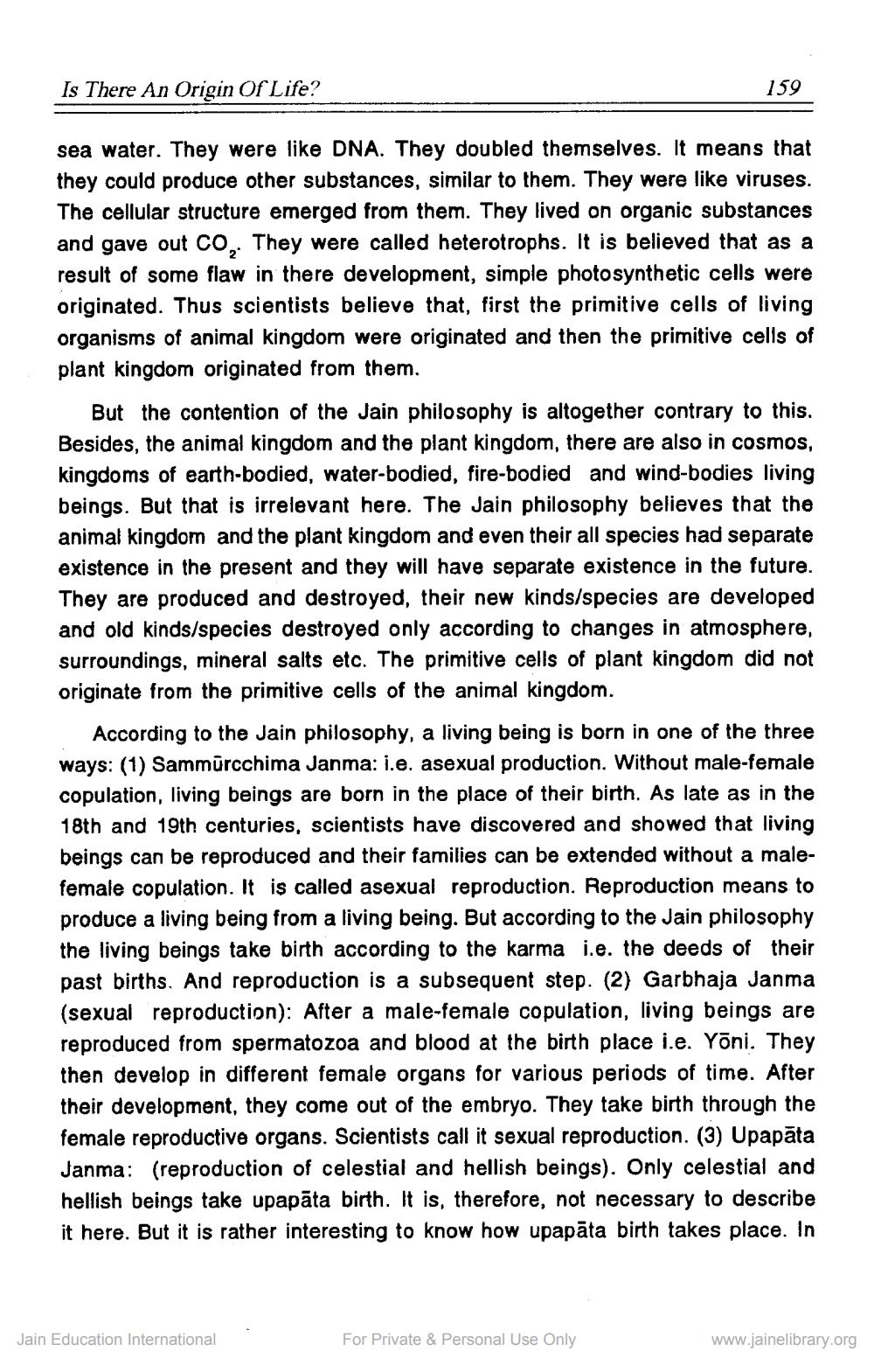________________
Is There An Origin Of Life?
159
sea water. They were like DNA. They doubled themselves. It means that they could produce other substances, similar to them. They were like viruses. The cellular structure emerged from them. They lived on organic substances and gave out CO,. They were called heterotrophs. It is believed that as a result of some flaw in there development, simple photosynthetic cells were originated. Thus scientists believe that, first the primitive cells of living organisms of animal kingdom were originated and then the primitive cells of plant kingdom originated from them.
But the contention of the Jain philosophy is altogether contrary to this. Besides, the animal kingdom and the plant kingdom, there are also in cosmos, kingdoms of earth-bodied, water-bodied, fire-bodied and wind-bodies living beings. But that is irrelevant here. The Jain philosophy believes that the animal kingdom and the plant kingdom and even their all species had separate existence in the present and they will have separate existence in the future They are produced and destroyed, their new kinds/species are developed and old kinds/species destroyed only according to changes in atmosphere, surroundings, mineral salts etc. The primitive cells of plant kingdom did not originate from the primitive cells of the animal kingdom.
According to the Jain philosophy, a living being is born in one of the three ways: (1) Sammūrcchima Janma: i.e. asexual production. Without male-female copulation, living beings are born in the place of their birth. As late as in the 18th and 19th centuries, scientists have discovered and showed that living beings can be reproduced and their families can be extended without a malefemale copulation. It is called asexual reproduction. Reproduction means to produce a living being from a living being. But according to the Jain philosophy the living beings take birth according to the karma i.e. the deeds of their past births. And reproduction is a subsequent step. (2) Garbhaja Janma (sexual reproduction): After a male-female copulation, living beings are reproduced from spermatozoa and blood at the birth place i.e. Yāni. They then develop in different female organs for various periods of time. After their development, they come out of the embryo. They take birth through the female reproductive organs. Scientists call it sexual reproduction. (3) Upapāta Janma: (reproduction of celestial and hellish beings). Only celestial and hellish beings take upapāta birth. It is, therefore, not necessary to describe it here. But it is rather interesting to know how upapāta birth takes place. In
Jain Education International
For Private & Personal Use Only
www.jainelibrary.org




